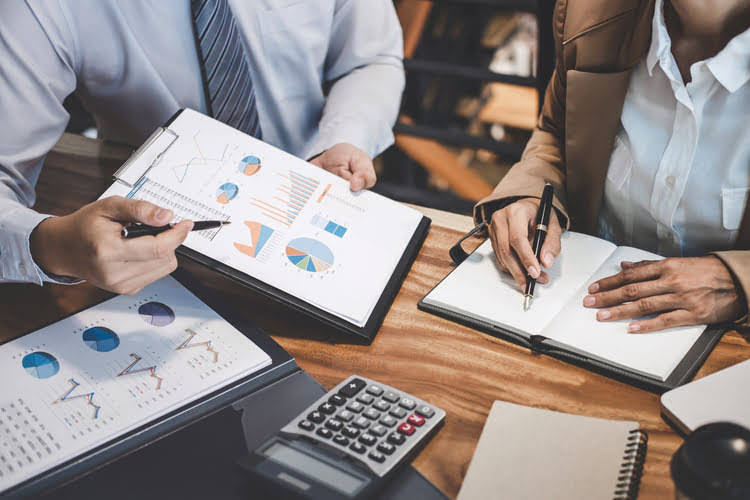
For preferreds, as they are both bond-and stock-like, their correlation profile is low relative to both asset classes, as shown below. Noncumulative refers to a preferred stock dividend structure where unpaid dividends do not accumulate over time. Within the spectrum of financial instruments, preferred stocks (or “preferreds”) occupy a unique place. Because of their characteristics, they straddle the line between stocks and bonds. Preferred stocks can be traded on the secondary market just like common stock.
- Individual and institutional investors can both benefit from the steady income that they can be paid.
- Regulators often scrutinize noncumulative instruments due to their potential misuse.
- If interest rates fall, for example, and the dividend yield does not have to be as high to be attractive, the company may call its shares and issue another series with a lower yield.
- This means that a share of cumulative preferred stock must have all accumulated dividends from all prior years paid before any other lower-tier share can receive dividend payments.
- If it later decides to start paying dividends again, cumulative preferred shareholders are entitled to receive all of their previous missed dividend payments before the company can pay common shareholders anything.
- Should interest rates fall, both will see strong capital gains as their value climbs closer to PAR.
What is the approximate value of your cash savings and other investments?
The most common sector that issues preferred stock is the financial sector, where preferred stock may be issued as a means to raise capital. In some years, a company may decide it cannot financially afford to issue a dividend. However, participating preferred stockholders may still be entitled to a dividend.

Part 4: Getting Your Retirement Ready
Similarly, alterations to tax laws may impact the after-tax return for investors, modifying their investment decision. While non-cumulative preferred stockholders have a higher priority claim on the company’s assets than common stockholders, they are typically lower in priority compared to bondholders and other debt holders. These dividend payments are guaranteed but not always paid out when they are due.
Preferred stock vs. bonds
- In the claim on the company’s assets than bondholders and other debt holders.
- Non-cumulative preferred stock is a type of security that offers investors the potential for stable income, reduced financial obligations for issuers, and lower risk compared to other investment options.
- All dividends owed to holders of cumulative preferred shares must be paid before holders of straight, or noncumulative, preferred and common stock can receive dividends.
- Each may or may not have different features that make them more or less favorable compared to other types.
- Second, preferred stock typically do not share in the price appreciation (or depreciation) to the same degree as common stock.
- Common shareholders get voting rights, while preferred share holders typically don’t.
This allows me to buy the stock at a great yield today and enjoy a strong discount to par. This provides plenty of room to accumulate capital gains over the long term and reduces its likelihood of being called in the future because its yield at PAR is so low. Bank OZK recently raised their common dividend, providing more assurance that the preferred will not see payment issues anytime soon. Cumulative preferred stocks provide provisions for the payment of dividends that have been missed out and make sure that all dividends of the company are paid to the cumulative preferred shareholders.

Risks and Strategies Associated With Noncumulative
All preferred dividends must be paid first, but if no dividends are declared, the noncumulative preferred shareholders don’t get a dividend that year. When a company runs into financial problems and cannot meet all of its obligations, it may suspend its dividend payments and focus on paying business-specific expenses and debt payments. When the company gets through the trouble and starts paying out dividends again, standard preferred stock shareholders possess no rights to receive any missed dividends. These standard preferred shares are sometimes referred to as non-cumulative preferred stock. This is before other classes of preferred stock shareholders and common shareholders can receive dividend payments. With cumulative preferred stock, the company must keep track of the dividends it chooses not to pay to its preferred shareholders.
- The company is not obliged to pay noncumulative stockholders any unpaid dividends.
- This stipulation benefits the issuing company more than the shareholder because it essentially enables the company to put a cap on the value of the stock.
- Today, though, I’m not interested in holding their common stock long-term, although it does look like an attractive investment for those interested in lower yields.
- If the investor converted their holding into preferred stock, they would own securities with a total market value of $1,200, compared with a $1,050 bond.
- Non-cumulative preferred stock provides flexibility in dividend payments, reduces financial obligation, and carries lower risk for investors.
- Bank OZK recently raised their common dividend, providing more assurance that the preferred will not see payment issues anytime soon.

Cumulative preferred ranks above noncumulative preferred in terms of investment security, so it trades rich to the market for noncumulative preferred. Trading rich means its dividend rate of return is lower and it may have a higher credit rating assigned to the issue compared with that of the noncumulative preferred of the same issuer. A company issues a cumulative preferred so it can price its dividend https://www.bookstime.com/ lower than the market rate for noncumulative preferred. Investors seeking low-risk investments will accept a lower dividend rate in return for the promise of assured dividend payments and first call on company assets in the event of liquidation. The day-to-day implication of this claim is that preferred shares guarantee dividend payments at a fixed rate, while common shares have no such guarantee.
- Securities and Exchange Commission (SEC) and the UK’s Financial Conduct Authority (FCA) regulate these instruments.
- Preferred stock dividend payments are not fixed and can change or be stopped.
- The dividends on the Series E Preferred Stock and Series F Preferred Stock are payable on September 1, 2024, but occurring on September 3, 2024 to preferred shareholders of record on August 19, 2024.
- Our work has been directly cited by organizations including Entrepreneur, Business Insider, Investopedia, Forbes, CNBC, and many others.
- Please note that any such statements are not guarantees of any future performance and actual results or developments may differ materially from those projected.

In turn, the investor would receive a $70 annual dividend, or $17.50 quarterly. Typically, this preferred stock will trade around its noncumulative preferred stock par value, behaving more similarly to a bond. Investors who are looking to generate income may choose to invest in this security.





